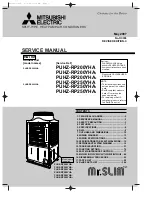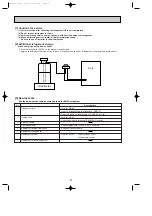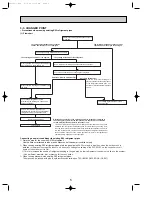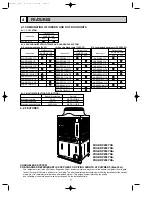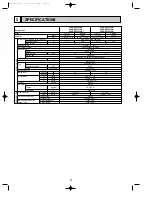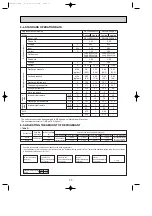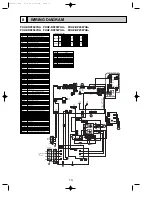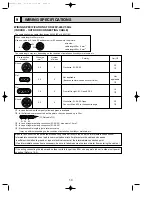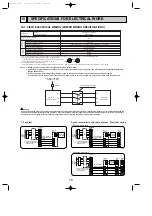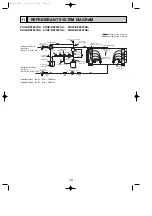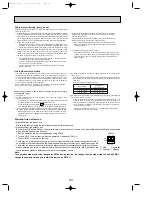
5
3-3. CHANGED POINT
• Precautions when reusing existing R22 refrigerant pipes
(1) Flowchart
Connecting a new air conditioner to existing R22 refrigerant pipes
1
Flare the pipe for the use with R410A refrigerant.
Use the flare nut attached to indoor and outdoor unit of the new air conditioner only.
2
When reusing existing R22 refrigerant pipes of which gas pipe is
[
28.58mm and, in addition, when the outdoor unit is
installed to lower position than the indoor unit, be sure to change the setting of the DIP SW8-1 on the controller circuit
board of the outdoor unit to ON.
✽
This is to increase the speed of refrigerant passing in the gas pipe so that refrigerant oil can smoothly flow in the system.
• Use a different-diameter joint or brazing for the connection.
3
When reusing standard-size existing R22 refrigerant pipes.
The pipes can be reused with pipe length restriction described on TECHNICAL DATA BOOK (OCS01).
Measure the existing pipe thickness and check
for damage.
The existing pipe thickness meets specifi-
cations and the pipes are not damaged.
The existing pipe thickness does not meet
specifications or the pipes are damaged.
Check if the existing air conditioner can operate.
The existing air conditioner can operate.
The existing air conditioner cannot operate.
After operating the cooling system for about
30 minutes, do a pump down work.
Use a refrigerant collecting device to collect the refrigerant.
Check the oil condition when collecting the refrigerant.
Oil is clean. (Clear to brownish color)
Oil is dirty. (Black color)
When the compressor bearings are
glazed, rotation scratches are present,
or the compressor breaks down, iron
particles or oil deterioration will blacken
the oil.
Disconnect the existing air conditioner from
the pipes.
The existing piping can be reused.
After flaring the pipes again, connect the
new air conditioner.
The existing pipes cannot be reused.
Use new pipes.
Perform the following inspections: air
tightness test, vacuum dryness (additional
refrigerant charge), gas leakage check
Replacement operation
Test operation
Replacement operation is the operation by which impurities remaining in
the existing piping (chlorinated compounds) are captured by the activated
carbon filter (replacement filter) in the outdoor unit.
• This model will automatically begin the replacement operation after it has been
installed when it enters the initialization phase for normal heating or cooling. How-
ever, the unit will not automatically perform the replacement operation if it is moved
to a new location where it will be used with existing R22 refrigerant piping. Under
such conditions, always use the SW8-2 operations to perform the replacement
operation before beginning the test operation.
OC338C-1.qxp 07.5.24 11:30 AM Page 5

